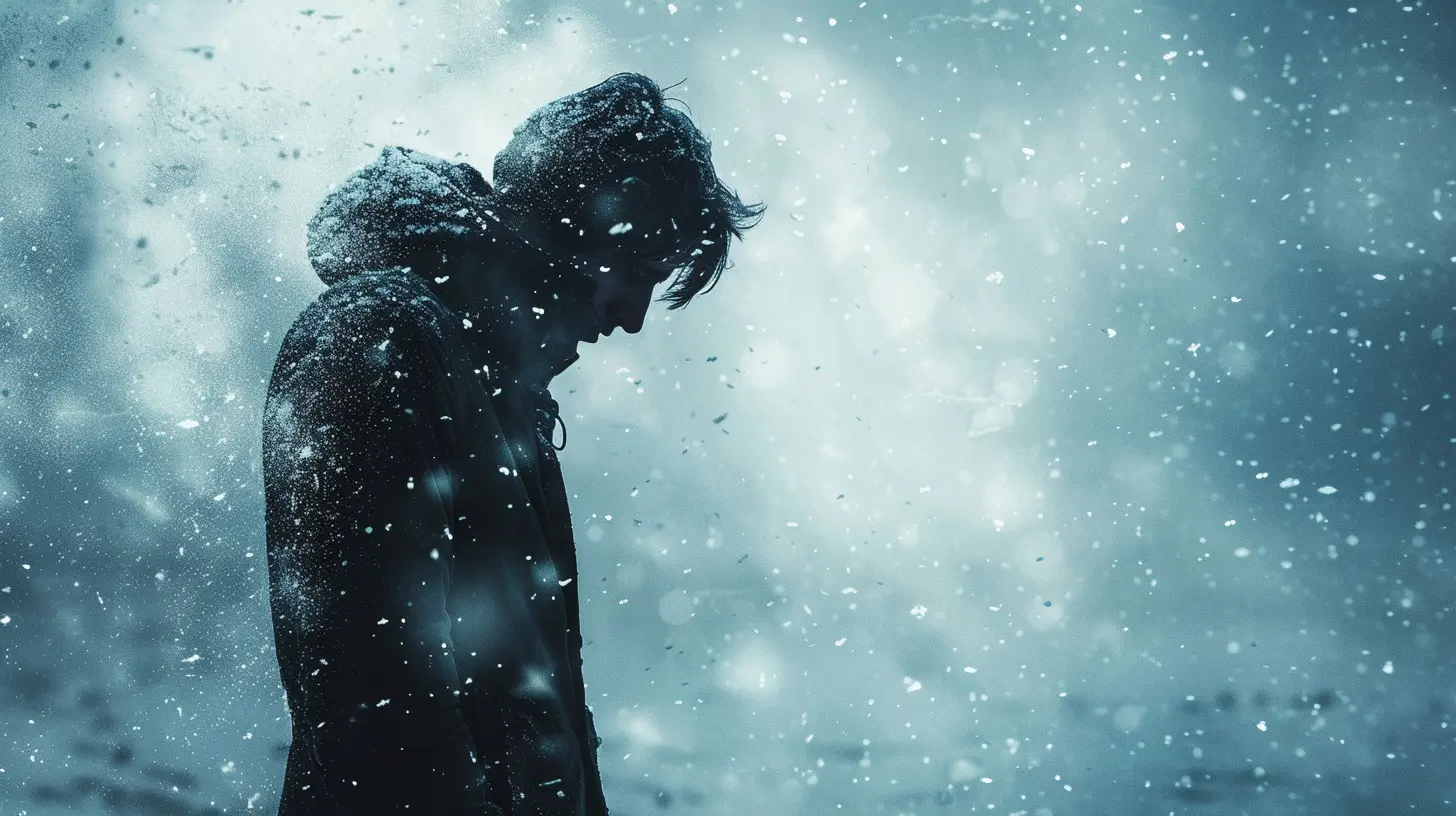Understanding the Freeze Response in Trauma Survivors
14 June 2025
When we think about survival instincts, we usually picture the classic “fight or flight” response — the body gearing up for action, either to confront danger or run from it. But there's another survival mechanism that doesn't get as much love or attention: the freeze response. It's time we shed some light on this lesser-known, yet incredibly important reaction, especially in the lives of trauma survivors. So, grab a cup of coffee (or tea!), get comfy, and let’s dive into this fascinating (and totally normal!) part of our nervous system.
What Exactly Is the Freeze Response?
Picture this: a deer stands frozen in the headlights of an oncoming car. It’s not running. It’s not fighting. It’s just… frozen. Completely still. This is the freeze response in motion, and it's not just something animals do — humans do it too.The freeze response is our brain and body’s third option when faced with danger. When fight or flight doesn’t seem possible or safe, our body can automatically choose to freeze. It’s like hitting the pause button, hoping the threat will pass if we just stay really, really still.
This isn’t a conscious decision. It’s hardwired. And for trauma survivors, it can become deeply rooted in the way their body and mind react to stress.
Why Do We Freeze?
In moments of danger, our brain kicks into gear to protect us. The amygdala — that little almond-shaped part of the brain — acts like an alarm system. It scans for threats and launches us into action. But when the threat feels overwhelming or inescapable, the body might default to freezing.Think of it as nature’s version of “playing dead.” It’s a survival trick. Our heart rate slows, our muscles stiffen, and our minds can go blank. It’s the body’s short-term attempt to blend into the background — to not be seen, heard, or targeted.
For trauma survivors, especially those who endured childhood trauma, abuse, or situations they couldn’t escape from, the freeze response becomes ingrained. It becomes their body’s go-to survival strategy.
How the Freeze Response Shows Up in Trauma Survivors
Here's where things get real. The freeze response doesn’t always appear as a dramatic, deer-in-the-headlights moment. Sometimes, it’s quiet. Subtle. Hidden under layers of emotional or behavioral patterns.Trauma survivors might:
- Feel "numb" when emotions rise.
- Zone out during arguments or conflict.
- Struggle to make decisions.
- Experience moments of paralysis or inability to act.
- Feel like time "slows down" during stress.
- Go blank during conversations.
- Feel disconnected from their bodies (a sensation known as dissociation).
Sound familiar? You're not alone. These are all signs that the freeze response might be at play.
Fight, Flight... and Freeze: The Forgotten Sibling
Let’s do a quick recap of the big three:| Response | What It Does | When It Happens |
|-----------|--------------|------------------|
| Fight | Confronts the threat head-on | When the threat seems beatable |
| Flight | Escapes the threat | When there's a way to run |
| Freeze | Immobilizes | When neither fight nor flight seems possible |
While fight and flight are more action-oriented, the freeze response is all about stillness. People often feel confused or ashamed after a freeze response — "Why didn't I DO something?" — but the truth is, freezing is an action. It’s a biological response designed to help you survive.
The Link Between Freeze Response and PTSD
If you’re living with Post-Traumatic Stress Disorder (PTSD), the freeze response might feel like an uninvited guest that never left. Your body remembers the trauma even when your mind tries to forget it. And when your nervous system senses a trigger — even a subtle one — it might jump to freeze mode, like flipping a hidden switch.Here’s the tricky part: the freeze response can make you feel stuck... literally. It's like your emotional emergency brakes are on, and no matter how much your mind wants to move forward, your body says, “Nope. Not safe.”
Understanding this can bring a lot of relief. The freeze response isn’t a sign of weakness. It’s a sign your body is trying to protect you.
Breaking the Stigma Around “Freezing”
Let’s bust a myth real quick — the idea that freezing is the same as giving up. Nope. Not even close. Freezing is a survival strategy. It might not always be helpful now, but at the time of your trauma, it may have saved your life.For trauma survivors, shame often follows the freeze response. “Why didn’t I scream?” “Why didn’t I run?” “Why did I just let it happen?”
These questions are painful, but they come from a misunderstanding. The truth is, you didn’t choose to freeze — your body did. And it chose it because it believed it was the safest option at that moment.
How to Start Healing from the Freeze Response
Good news — healing is absolutely possible. You can teach your body and nervous system that it’s safe now, even if it didn’t feel safe before.Here are some gentle ways to begin:
1. Acknowledge and Accept Your Experience
The first step is always awareness. Realize that the freeze response is normal. It’s not your fault. It was your body’s way of protecting you.Being kind to yourself — truly, deeply kind — is massive here. Speak to yourself like you would a dear friend.
2. Reconnect with Your Body (Somatic Practices)
One of the side effects of the freeze response is a sense of disconnection from the body. Somatic (body-based) practices help bridge that gap.Try this:
- Gentle stretching
- Yoga or mindful movement
- Deep breathing exercises
- Placing your hand over your heart and noticing your heartbeat
- Tapping (EFT)
Let your body know it’s safe to come back online.
3. Grounding Techniques
When you feel dissociated or stuck, grounding can help bring you back to the present. You’re teaching your nervous system that the danger isn’t here anymore.Try the 5-4-3-2-1 method:
- 5 things you can see
- 4 things you can touch
- 3 things you can hear
- 2 things you can smell
- 1 thing you can taste
Simple. Effective. Soothing.
4. Work with a Trauma-Informed Therapist
If you’ve experienced trauma, finding a therapist who understands the freeze response can be a game-changer. They can guide you through your healing journey with compassion and expertise.Modalities to consider:
- Somatic Experiencing (SE)
- Eye Movement Desensitization and Reprocessing (EMDR)
- Internal Family Systems (IFS)
- Sensorimotor Psychotherapy
Don’t be afraid to shop around for the right fit. You deserve support from someone who gets it.
Reframing The Freeze: From Shame to Empowerment
Instead of seeing freezing as a failure, what if you saw it as a superpower? A built-in protective mechanism that kept you alive? Because that’s exactly what it is.Your body isn’t broken — it’s brilliant. It did its best under impossible circumstances. Now, as you heal, you get to rewrite the story. You get to teach your nervous system that the storm has passed, and it’s safe to feel, speak, move, and live.
Real Talk: Healing Takes Time, But It's Worth It
If the freeze response has been part of your life for a while, unlearning it might take some time. Be patient with yourself. Celebrate your small wins — even noticing your freeze response is a huge step forward!Healing trauma is like tending to a garden. Some days you're planting seeds, some days you're weeding, and some days you're just letting the sun do its thing. Every step counts.
Final Thoughts: You're Not Alone
If you're reading this and nodding along, please know this: you're not broken. You're human. You're built with intricate, amazing systems that are all trying to protect you — even if they sometimes overdo it.Understanding the freeze response is the first step to releasing its grip. With time, care, and lots of self-compassion, you can move from frozen to free.
And hey — you're already doing the work, just by being here. That’s something to smile about.
all images in this post were generated using AI tools
Category:
TraumaAuthor:

Janet Conrad
Discussion
rate this article
2 comments
Kristina McCartney
This article beautifully captures the often overlooked freeze response in trauma survivors. It’s a reminder that healing isn’t linear, and acknowledging all responses is essential to understanding and supporting one another.
June 18, 2025 at 4:51 PM

Janet Conrad
Thank you for your thoughtful comment! I'm glad the article resonated with you and highlighted the importance of recognizing all trauma responses in the healing journey.
Colin Lawson
This article provides valuable insights into the freeze response in trauma survivors. Understanding this complex reaction is essential for both mental health professionals and those affected by trauma. Thank you for shedding light on such a crucial aspect of trauma processing and recovery.
June 14, 2025 at 2:49 AM

Janet Conrad
Thank you for your thoughtful comment! I'm glad you found the insights valuable for understanding the freeze response in trauma.


